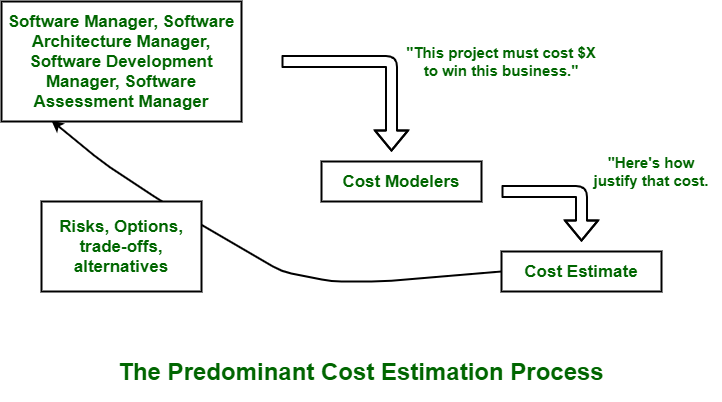Pragmatic Software Cost Estimation
Pragmatic Software Cost Estimation is a practical and realistic approach to predicting the total costs involved in developing software. It uses historical data, expert judgment, and empirical methods to provide accurate and actionable cost estimates, considering factors such as project scope, complexity, and available resources.
One critical problem in software cost estimation is a lack of well-documented case studies of projects that used an iterative development approach.
- Software industry has inconsistently defined metrics or atomic units of measure, the data from actual projects are highly suspect in terms of consistency and comparability.
- There have been many debates among developers and vendors of software cost estimation models and tools.
Three topics of these debates are of particular interest here:
1.Which cost estimation model to use?
2.Whether to measure software size in source lines of code or function points.
3.What constitutes a good estimate?
- Nowadays, there are several models available of cost estimation like COCOMO model, Checkpoint, ESTIMACS, SLIM, Knowledge Plan, etc…
- The manager of software project defines and describes target cost of software, and after then until target cost can be justified, it manipulates parameters and size.
- The process is described in diagram is very necessary to analyze and predict cost risks and understand sensitivities and trade-offs objectively.

Following are the attributes that Good Software Cost Estimate Contains :
- It is simply conceived i.e. planned and supported by project manager, architecture team, development team, and test team responsible for performing work and task.
- All the stakeholders generally accept it as ambitious but realizable.
- It is based on a well-defined and efficient cost model of software on a credible basis.
Use of Cost Estimation :–
- One needs to choose and determine how many engineers are required for project to develop and establish a schedule during planning stage.
- While monitoring project’s progress, one needs to access whether project is progressing towards achieving goal according to procedure and whether it takes corrective action or not.